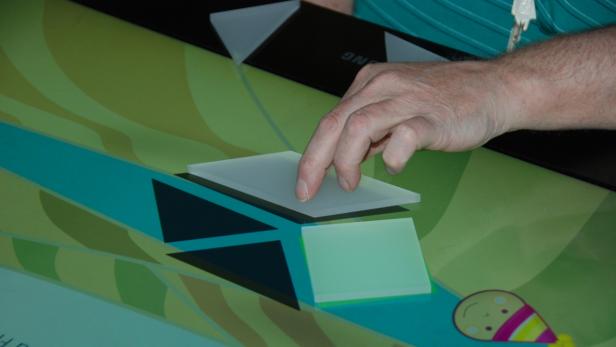
Surface computer helps with stroke therapy
Dieser Artikel ist älter als ein Jahr!
The researchers in Hagenberg want to improve therapy for patients with acquired brain damage with the help of the PixelSense surface computer that was developed by Microsoft and Samsung. This especially applies to stroke patients, but people suffering from the effects of oxygen deprivation or an accident are also to benefit from the new technology. No new forms of therapy are used. “Existing exercises are adapted for use on the electronic table. The point is not to improve conventional therapy methods, but to increase their value,” said Mirjam Augstein, project director at the Hagenberg University of Applied Sciences.
Simpler therapy
Computer-aided therapy methods have been used for some time already. The advantage of PixelSense is that the surface also allows the use of objects, because the touch table recognizes objects that are placed on it and the user’s interaction with them. This also allows patients who have a hard time operating a conventional PC to work on the computer. And many of the exercises are designed with work at a table in mind anyway. “The therapists also profit from working with the intelligent tables. It is much simpler to switch between exercises, to change the difficulty and to statistically monitor the patient’s progress than when the exercises are completed in the conventional manner,” Augstein said.

© R. Schacherl
One prototype that has already been completed is a PixelSense version of tangram training. Here, complex figures are created from simple geometric shapes. The patients can complete the game with specially made plastic blocks directly on the table, and the therapists can adapt the game to the specific circumstances.
Good experiences
Fun.tast.tisch has been running since October of last year. Two to three modules for the prototypes have been completed and are awaiting evaluation with patients under clinical conditions. The research is scheduled to run until the end of September 2014. Fun.tast.tisch is a joint project of LIFEtool, the Hagenberg University of Applied Sciences, the Upper Austrian University of Applied Sciences for Healthcare, Artgroup Advertising, softaware gmbh, Transparent Design and the therapist Irene Schacherl-Hofer. It is also being supported by the Austrian Research Promotion Agency. Patients and therapists are involved in the design of applications from the start. The table that is being used is a conventional PixelSense model that runs on Windows 7. The development environment and some program libraries are being provided by Microsoft. Such a device costs about EUR 7,500.
“Therapists are usually not alone, but work in institutions and at joint practices. The acquisition of such a device is no problem for such organizations. But we are not that far yet,” Augstein explained. The patients who have had contact with PixelSense up until now have reacted positively to the system. “The direct feedback from the table is very motivating.”
Kommentare